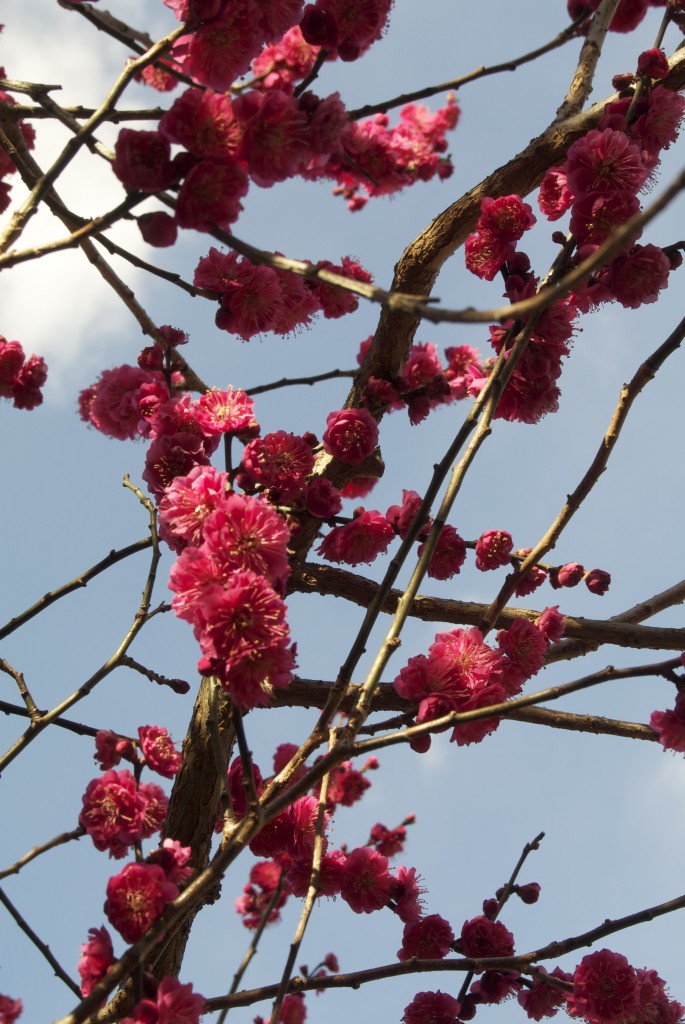
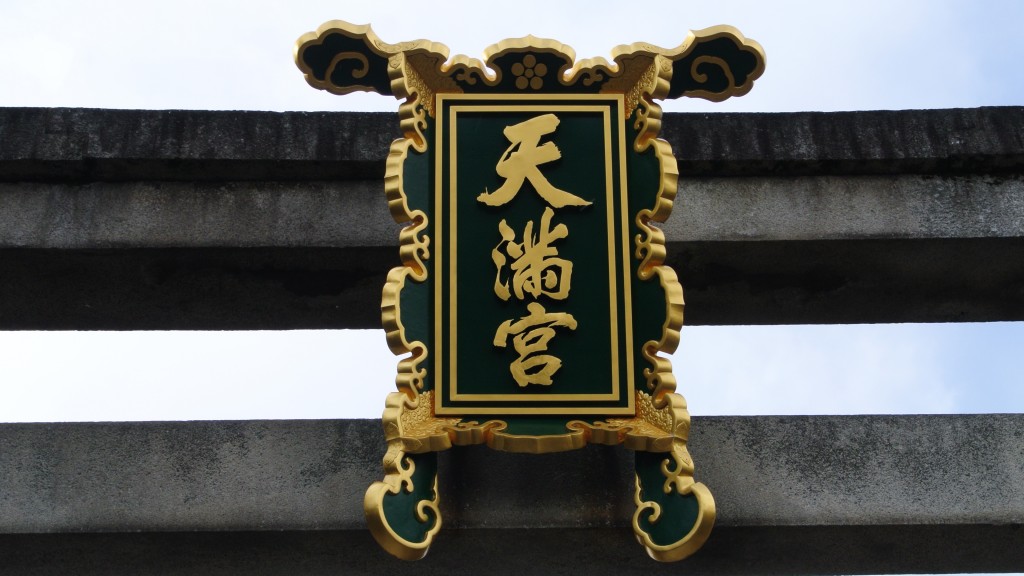
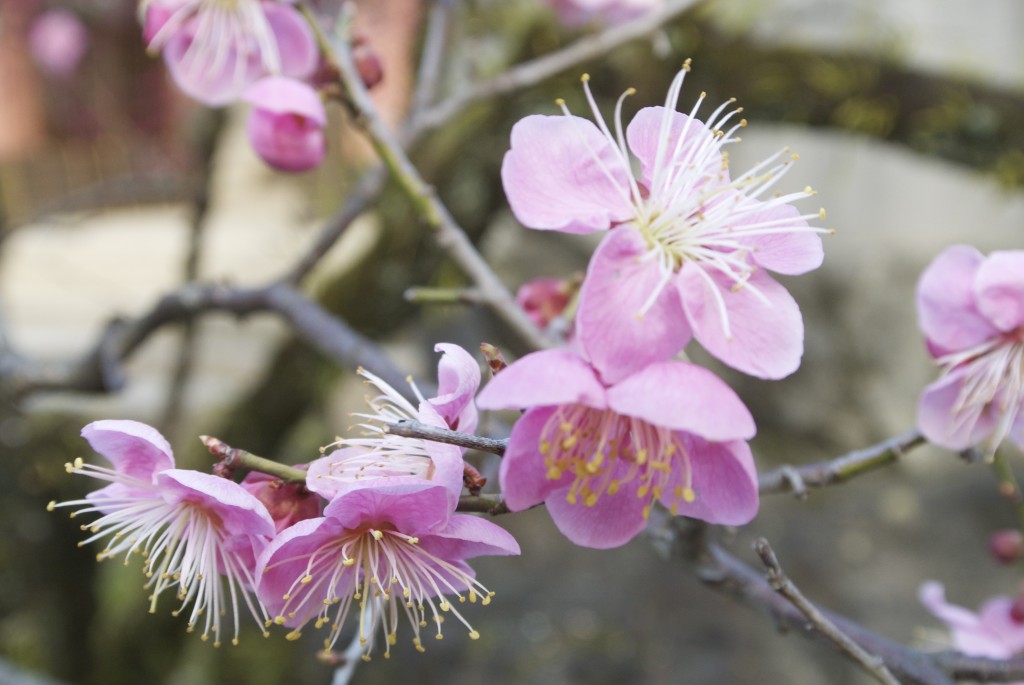
There are over 10,000 Tenmangu shrines in Japan which honour the spirit of Sugawara no Michizane (845-903), a Heian era statesman and poet who was unjustly exiled to Kyushu for plotting against the emperor. Years later oracular dreams indicated that his ‘angry spirit’ (goryo) was responsible for a series of disasters in the capital, and measures were taken to placate it. Apotheosised as Tenjin (Spirit in the Sky), he replaced an earlier thunder kami that had been worshipped at Kyoto’s Kitano.
Kitano Tenmangu now stands at the head of some 10 – 20,000 Tenmangu shrines nationwide (though Dazaifu Tenmangu in northern Kyushu, where he was buried, has claims too). Anyone familiar with such shrines will know three things: 1) they feature plum blossom; 2) they have ox statues; 3) their ema are hugely popular at exam time, as the deified spirit is the kami of scholarship.
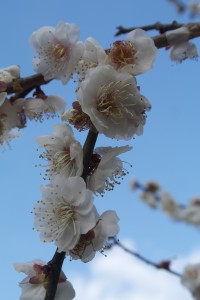
Sugawara no Michizane had been a great lover of plum trees, and so the tree is planted at shrines in his honour. When he was sent into exile, one of his last poems had been to his beloved plum trees:
When the east wind blows,
Let it seed your fragrance,
Oh, plum blossoms.
Although your master is gone
Do not forget the spring.
It’s said that his favourite plum tree in Kyoto was so distraught when Michizane went into exile that it flew off to be with him. Called the tobiume (flying plum), it is held to be the one that stands today in front of Dazaifu Shrine.
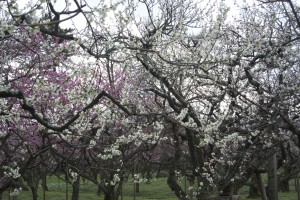 As well as individual plum trees dotted around the grounds, Kitano Tenmangu boasts a grove of some 2000, and it is here every year that the Baikasai (Plum Blossom Festival) is held on Feb. 25. The festival began about 900 years ago, and a huge open-air tea ceremony is held nowadays by the geisha and apprentice maiko of the nearby Kamishichiken district. It was one of the first events I ever saw in Japan when travelling around the world in 1975, and it made a profound impression.
As well as individual plum trees dotted around the grounds, Kitano Tenmangu boasts a grove of some 2000, and it is here every year that the Baikasai (Plum Blossom Festival) is held on Feb. 25. The festival began about 900 years ago, and a huge open-air tea ceremony is held nowadays by the geisha and apprentice maiko of the nearby Kamishichiken district. It was one of the first events I ever saw in Japan when travelling around the world in 1975, and it made a profound impression.
Another striking aspect of the Kitano shrine is the number of reclining cow or oxen statues. This derives from a legend about Michizane’s funeral at Dazaifu. The ox pulling the cart that carried his body was supposed to take him to his resting place but stopped suddenly and lay down. Despite repeated attempts to get it to move, it obstinately refused to budge. Those in attendance realised this was a sign from Michizane’s spirit that he wished to be laid to rest there, and the site became the present-day Dazaifu Tenmangu shrine.
*************************************************************
Information for this and the following posting on Kitano 2: shrine fabric are taken from Shinto Shrines: A Guide to the Sacred Sites of Japan’s Ancient Religion published by Univ. of Hawaii Press in 2013.
*************************************************************
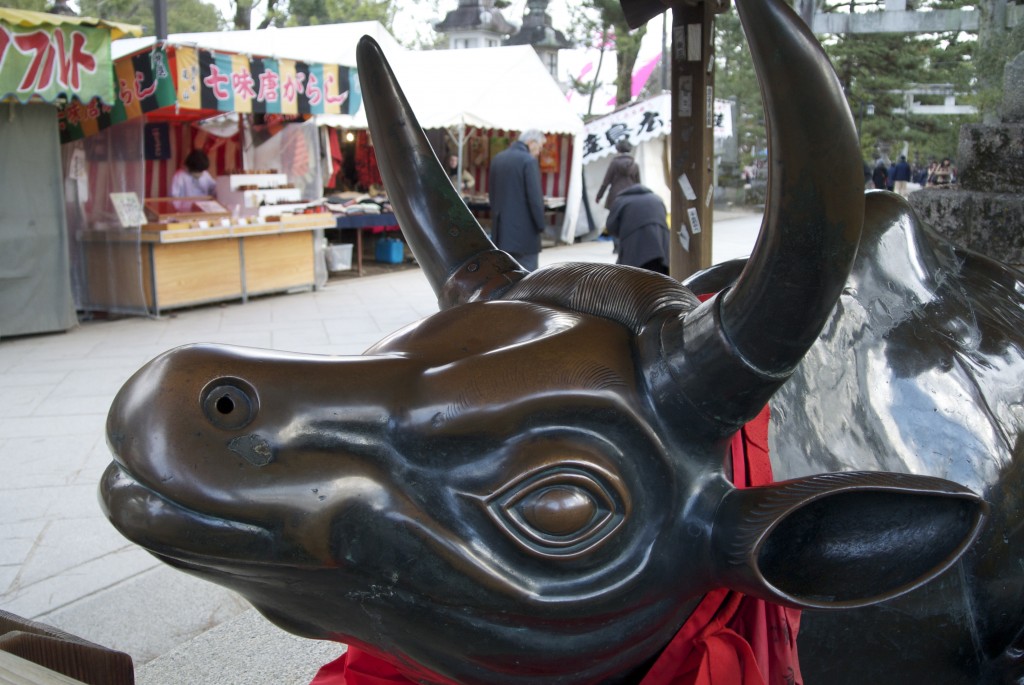
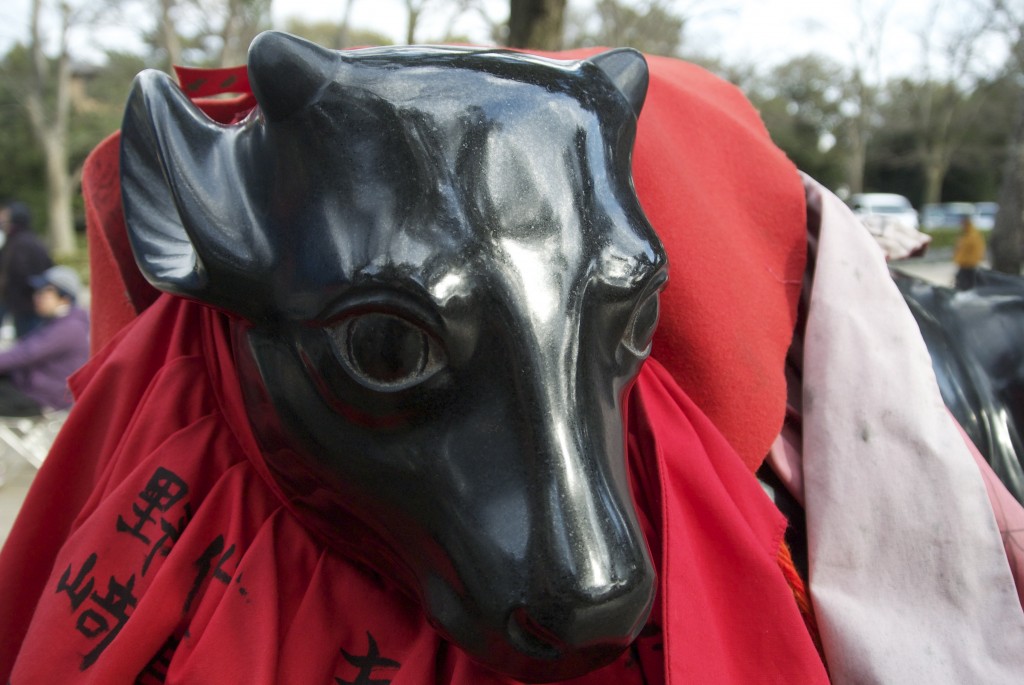
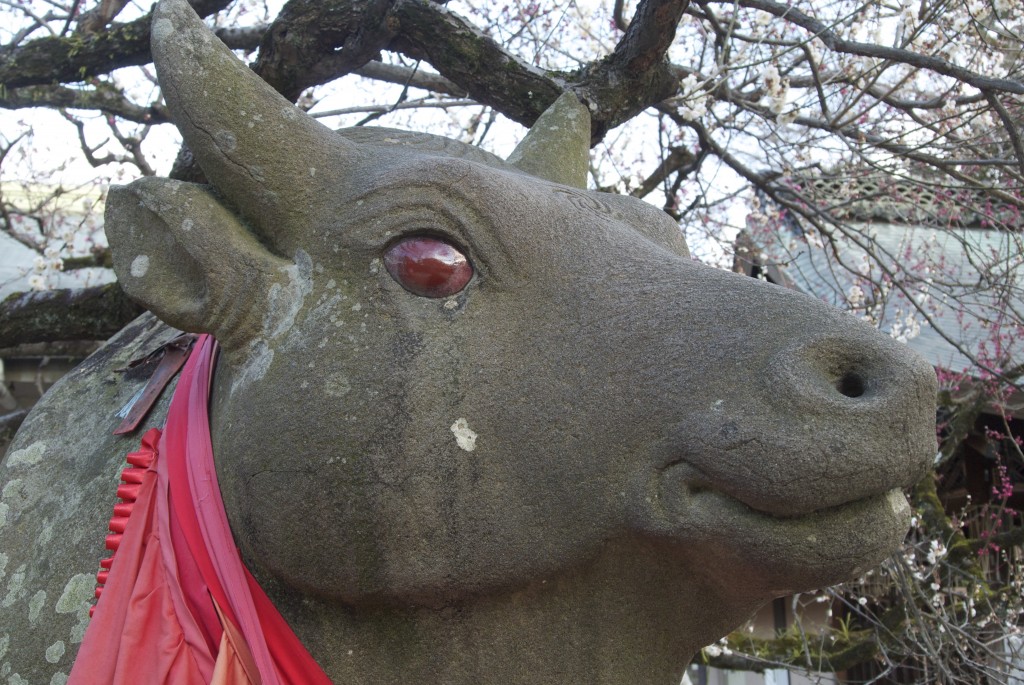
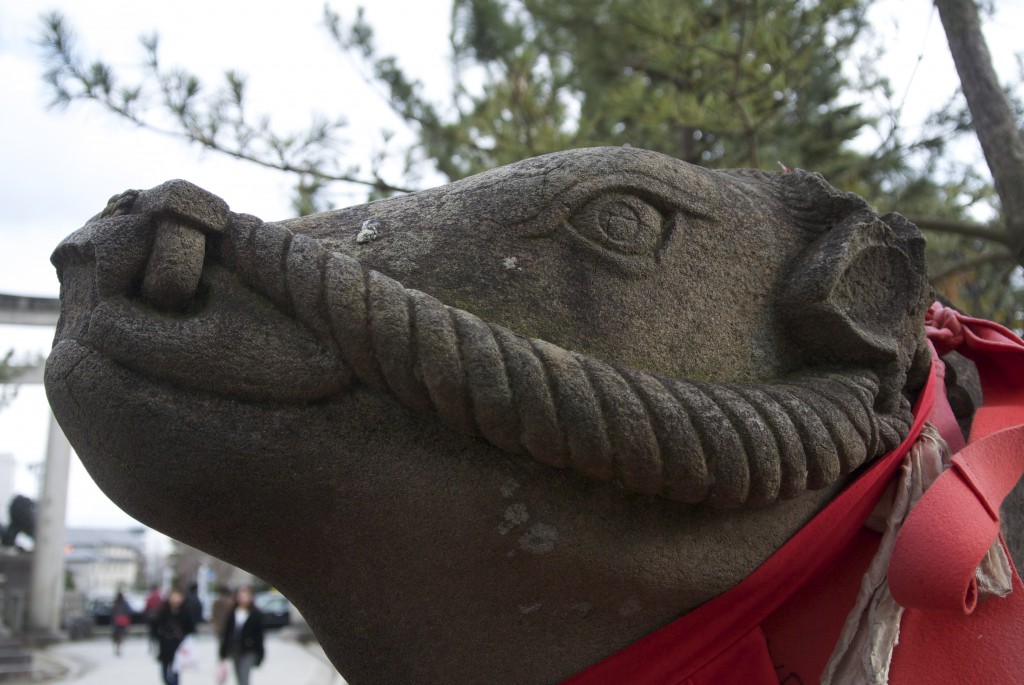
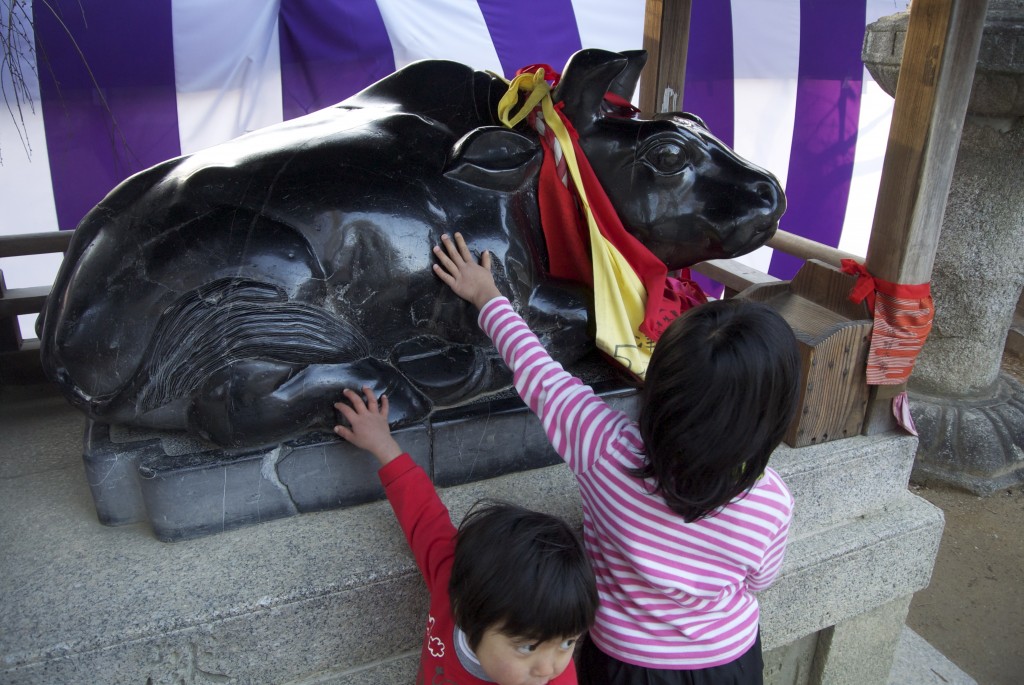
The custom is to rub the ox to get better or protect yourself. In particular you should rub in the place corresponding to the part of the body where you have an ailment. Those wishing to become cleverer rub the ox's head!

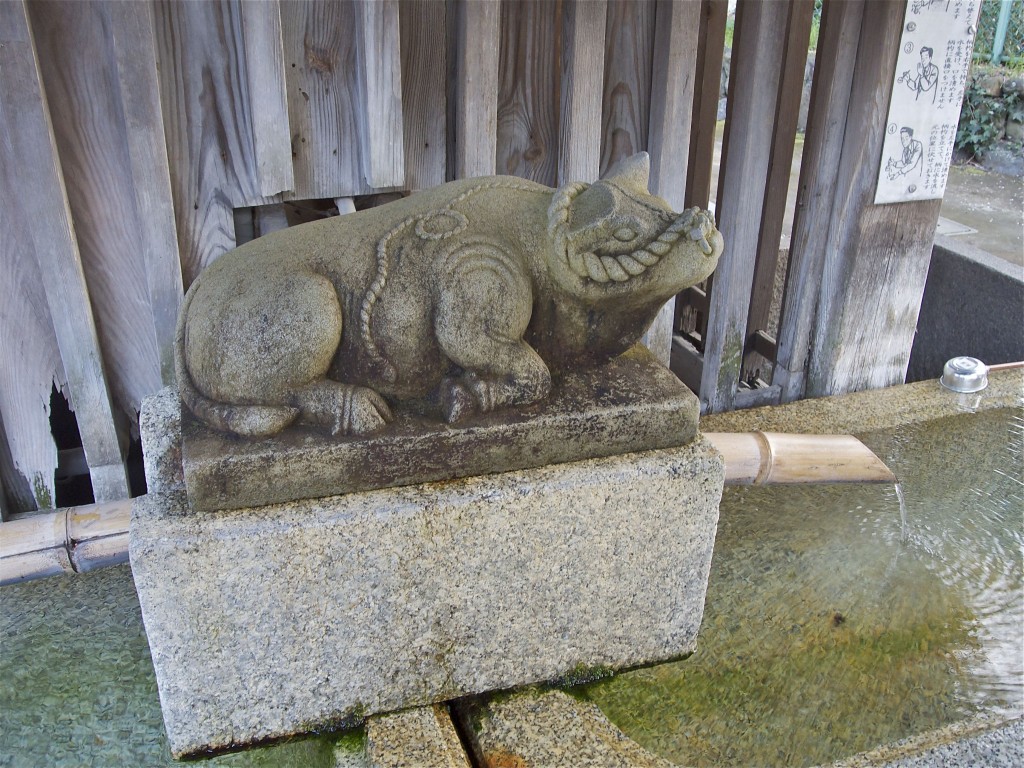
Leave a Reply